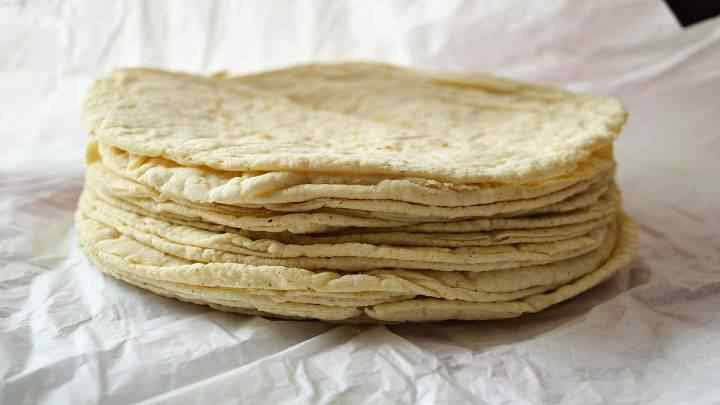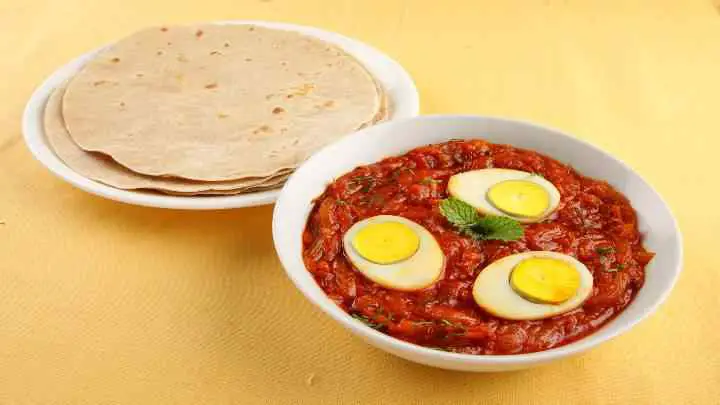Chapati and tortilla are popular flatbreads that accompany a number of dishes relating to their origin. However, these flatbreads have differences that distinguish them from each other.
Chapati is a thin flat roti made of whole wheat flour called atta and served with side curries and chutney, while tortilla is a flatbread made of corn flour and sometimes wheat flour.
Find out the various differences between the chapati and tortilla, their origin, and how to properly use these flatbreads.
What is a tortilla?
Originally made of maize hominy meal, tortillas are thin, circular, unleavened flatbreads. Tortillas are also sometimes made using wheat flour.

Before colonization, tortillas were first made by indigenous peoples in Mesoamerica and represent a major aspect of mesoamerican dishes.
SEE: Are Tostitos Tortilla Chips Gluten-Free and Safe to Eat?
What is a chapati?
The unleavened flatbread chapati, which is a variant of roti, originated in the Indian subcontinent and is a popular staple in India, Nepal, Bangladesh, Pakistan, Sri Lanka, East Africa, Arabian Peninsula, and the Caribbean.

Chapati is made from whole-wheat flour, also known as atta, which is mixed with water, oil (optionally), and salt (optionally) and then cooked on a tava (flat skillet).
There are numerous expatriates from the Indian subcontinent living around the world who consume this dish regularly. These immigrants particularly Indian merchants are also responsible for its wide adoption in numerous countries across the world.
What are the types of tortillas?
There are three known types of tortillas namely; corn tortillas, cactus-corn tortilla (nopaltilla), and wheat tortillas.
Corn tortilla
These are tortillas that are made using nixtamalized maize meal (corn that has been treated with flour) and are the oldest form of tortilla. Corn tortillas are very popular in America and originate from Mexico.
Mexico first started making these flatbreads around 1500 to 500 BC. However, the use of mechanical utensils in their preparation did not happen till the 19th century.
Utensils like tortilleras and tortilladoras used in pressing the flatbread were finally invented and mass-produced in Mexico.
Nopaltilla
Also known as cactus-corn tortilla, nopaltilla, or tortilla de nopal, is a mixture of cactus and corn meal to make cactus-corn tortilla wraps. This variety of tortillas is low in calories, rich in dietary fiber, and a good source of calcium.
Wheat tortilla
Wheat which is the major ingredient in wheat tortillas and is among one of the most used tortilla variants was introduced into America by the Europeans. After its introduction and cultivation, the northern region of Mexico adopt wheat and began using them to make wheat tortillas.
Tortillas made using wheat contain other ingredients like salt, lard, or oil, and sometimes leavening agents like baking powder, among other ingredients.
Wheat tortillas are mostly used in the creation of Mexican cuisines like fajitas, burritos, and tacos. It also serves as a primary food staple in most Mexican homes.
Wheat tortillas have become so popular that their production and uses have spread to other countries especially central American countries and some states within the United States.
What are the types of chapati?
Chapati varies according to some regions within India. These varieties include the following:
Vegetable-stuffed chapati
The Vegetable-stuffed chapati is a rolled chapati with stuffings that include mashed potato and carrots, masala gravy, fenugreek, and peas.
The combination of vegetables used may vary according to individual households.
Paneer chapati
This form of chapati utilizes grated paneer which is mixed with the chapati dough. Paneer chapati is also known as Paneer Paratha which translates to “stuffed bread”.
Mullangi chapati
This variation of the chapati makes use of a dough mixture that contains turmeric powder and radish. The mullangi chapati usually has a thick texture.
It also most times serves as the food of choice for road travelers who purchase food from local roadside restaurants.
The mullangi chapati is also known as the Mooli Paratha.
SEE: Roti vs Chapati – Uses, Differences And Similarities
What are the differences between a tortilla and a chapati?
The major difference between a tortilla and a chapati would be the flour used in making them. Chapati makes use of only wheat flour called atta, while tortilla makes use of either cactus-corn flour, corn flour, or wheat flour.
Also, chapati mostly serves as a side dish that comes with liquid dishes like chutney, soups, and curries. Tortillas, however, majorly serve as wraps.
Other differences between tortillas and chapati include;
Origin
Chapatis originated from the Indian subcontinent and remains a widely eaten flatbread in those regions. Tortillas on the other hand come from Mesoamerica countries.
Uses
Tortillas mainly serve as wrappings for Mexican cuisines like quesadillas, tacos, and burritos. This means that they are mostly filled or topped with other ingredients.
Chapatis, however, serve as an accompaniment to foods like dhal, chutneys, and curries. Also, each variety of chapati has specific types of foods they are served with.
SEE: The Unique Differences Between Maida and All-Purpose Flour
What are the health benefits of chapati?
Chapati contains soluble fiber which helps prevent constipation, aids colon health, lowers blood cholesterol, and strengthens the digestive system.
It also contains carbohydrates that provide energy and keeps you satisfied for a longer period.
What are the health benefits of tortillas?
Corn tortillas serve as a rich source of magnesium and dietary fiber. Fiber not only improves heart health and lowers the risk of diabetes, but it is also great for digestion.
Magnesium which is also present in the tortilla plays a key role in improving the muscles and heart’s performance as well as boosting the brain.
Tortillas also provide iron which helps the body circulate oxygenated blood.
However, unlike corn tortillas which contain less fat, flour tortillas may contain an undesirable amount of fat due to the presence of shortening or lard used in making them.
SEE: Roti vs Tortilla: Differences, Uses, And Health Benefits
How do you make tortillas?
You can make tortillas using the following ingredients:
- Vegetable oil (2 tablespoons)
- Plain flour (250g)
- Salt (½ teaspoon of fine salt)
STEP 1
Start by mixing the flour, salt, and vegetable oil in a bowl. Add warm water to the mixture and knead thoroughly. Remove the dough from the bowl and then knead once again on a floured flat surface for about 5 minutes till you conveniently form a smooth small ball of dough.
Cover your smooth ball of dough with a clean towel and allow it to stay for 15 minutes before rolling it flat with a rolling pin.
STEP 2
Out of your smooth big ball of dough, cut out 6 balls of dough in equal proportions and roll them flat on a floured surface to be as thin as possible. Your balls of dough should be about 2mm thick.
STEP 3
Get a large frying pan and heat it over medium heat for a few minutes before placing your tortilla dough in it. Allow your tortillas to cook for about 2 minutes on each side or until it appears toasted with a golden-brown color. Your tortillas are ready to eat or be used for other dishes.
How do you make chapati?
You can easily make your chapati dough by mixing flour, water, and salt and then kneading it with the knuckles of your hand.
After kneading the dough with the knuckles of your hand which was made into a fist, allow the dough to proof for about 15 minutes to allow the gluten to develop.
Once your chapati dough has been allowed to proof, it becomes softer and pliable. Pinch out small portions of the dough and form them into round balls. Flatten the small round balls by pressing them between your palms until they form discs.
Use a rolling pin on a flat surface to roll the discs out flat after dipping them in flour. The flattened-out chapati dough can now be placed on a preheated dry tava and cooked on each side till it is ready.
FAQs
Do tortillas contain eggs?
Traditionally, tortillas are made without the use of eggs or milk, however, modern chefs may modify their recipe.
Are chapatis vegan-friendly?
Yes, chapatis are vegan-friendly as they consist of mostly wheat flour, salt, and water.
Are there gluten-free tortillas?
Yes, the corn tortilla is a great example of gluten-free tortillas as it makes use of corn flour which does not contain gluten.
Conclusion
So which is better, chapati or tortilla? It’s too close to call. Both are relatively healthy, and delicious, and can be used for sandwiches, wraps, and other dishes.
The main difference between a chapati and a tortilla is its origin. Tortilla comes from Mexico, and chapati comes from India. Tortillas are also larger than chapatis and are mainly used as wraps.
Finally, chapatis are generally made of wheat flour while tortillas may use corn flour. Find out if tortillas go bad and things you should know before stocking up on flatbreads.
I hope you found this article helpful. Thanks for reading.







